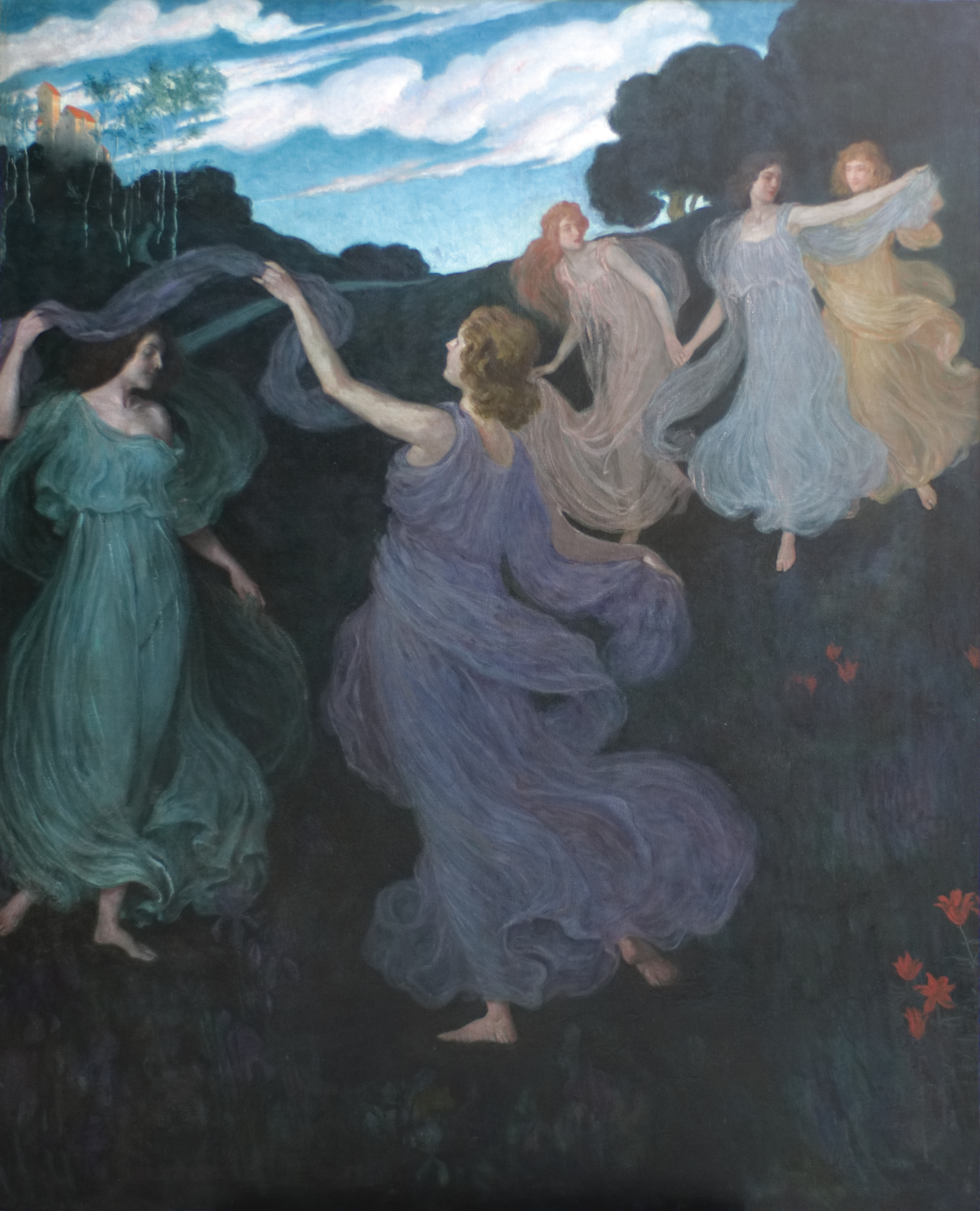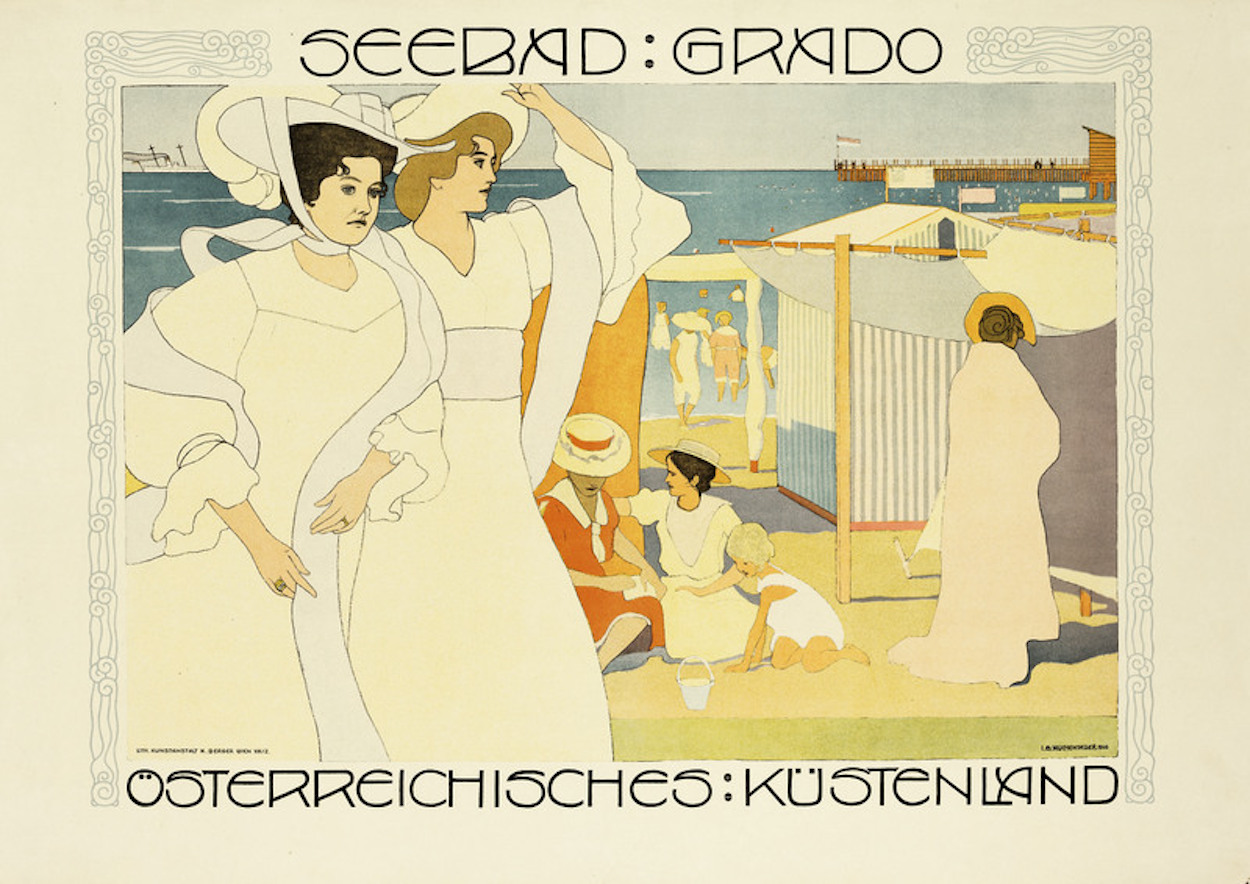July is the month of the Leopold Museum in Vienna and on Sundays in DailyArt we will present pieces from their marvelous collection now gathered in a newly conceived presentation, Vienna 1900. Enjoy! : )
Secession member Josef Maria Auchentaller created five large-scale paintings for the music room of the villa of jewelry manufacturer Georg Adam Scheid in Vienna’s wealthy Cottageviertel neighborhood in 1898–1899. The artist chose the five movements of Ludwig van Beethoven’s Symphony No. 6 (Pastoral Symphony) as themes and followed Beethoven’s specifications. The music room constituted a unique Gesamtkunstwerk and served as a fascinating example of the sophisticated exploration of music by visual arts at the turn of the century.
During a three-year stay in Munich (1892–1895), Auchentaller had been exposed to plein air painting as well as symbolism and these influences were reflected in the conception of the music room. The two paintings exhibited here (the first and the second movement of the Pastoral Symphony) belong to a part of the cycle characterized by Jugendstil elements.
As a counterpart to Gustav Klimt’s Beethoven Frieze, Auchentaller created the Ode to Joy frieze for the 14th Exhibition of the Vienna Secession in April 1902. This monumental composition, which was on display in the Secession building in the hall to the right, fell victim to the dismantling of the exhibition in the same year. With its use of ornamental elements in combination with naturalistic representations of bodies, it differed considerably from the almost lyrical interpretation of the Pastoral Symphony for the music room of Villa Scheid.
P.S. Read more about Klimt’s Beethoven Frieze here!


 Josef Maria Auchentaller
Josef Maria Auchentaller